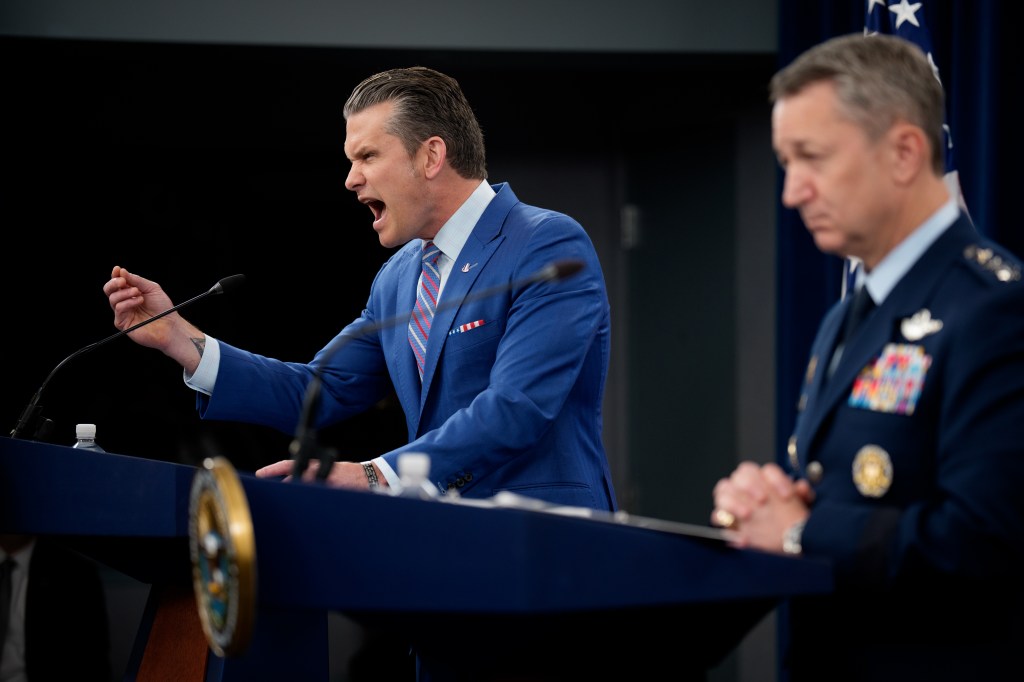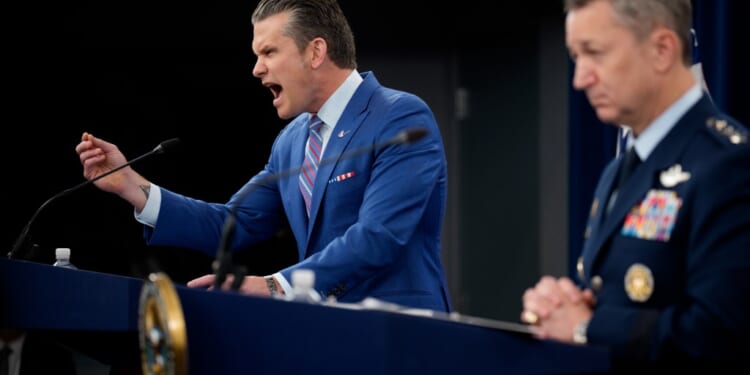
What the hell is going on at the Pentagon? That unspoken question saturates a Wednesday statement, released jointly by the Republican chairmen of the Armed Services committees in both the House of Representatives and the Senate, that is as long as it is blistering in its assessment of a significant reduction of American military presence in Eastern Europe.
In fact, the outrage of Sen. Roger Wicker of Mississippi and Rep. Mike Rogers of Alabama is palpable even before their prepared words begin, with a preamble noting the following statement expresses “concern with the Pentagon’s announcement that it will discontinue the rotational U.S. brigade in Romania, which appears uncoordinated and directly at odds with the President’s strategy.”
Their concern is, specifically, with the Defense Department’s announcement this week that an Army infantry unit deployed to Romania, near the border with Ukraine, would not be replaced when the unit returned home. The Pentagon’s own statement seemed to anticipate the lawmakers’ criticism, calling it a “positive sign of increased European capability and responsibility” and claiming that the adjustment “will not change the security environment in Europe.”
But Wicker and Rogers sound unconvinced, not only by the decision itself but by how it was made. “On March 19, we stated that we will not accept significant changes to our warfighting structure that are made without a rigorous interagency process, coordination with combatant commanders and the Joint Staff, and collaboration with Congress,” the two Republican lawmakers said. “Unfortunately, this appears to be exactly what is being attempted.”
This rebuke is but the tip of an iceberg of frustration with an increasingly isolated and chaotic Pentagon that I regularly hear expressed by folks on Capitol Hill, subject-matter experts, and even employees within the department. Under Defense Secretary Pete Hegseth, information is kept under tighter control, planning and decisionmaking have been consolidated within the office of the secretary, and career military officials are veering out of their lanes, often in an attempt to keep the massive bureaucracy running.
Key military advisers to the civilian leadership, such as the chairman of the Joint Chiefs of Staff, Gen. Dan Caine, are managing up to those civilian leaders to maintain a semblance of order—filling the gaps on decisionmaking and management of the department’s massive bureaucracy while the secretary is out making cinematic hype videos. The rank-and-file within the Pentagon itself are keeping their heads down, while the many more department officials who work at military installations across the country and the world are left in the dark about what’s happening back in Arlington.
And observers and interests outside the building are anticipating the release of the National Defense Strategy with intense concern. Federal law requires the Defense Department to produce and for the secretary to sign this comprehensive document offering strategic guidance every four years. This forthcoming NDS will reportedly reorient defense priorities toward the homeland and the Western Hemisphere in ways that many of the top military brass (including Caine) have criticized for its potential cost to our readiness in other parts of the world.
“The National Defense Strategy really matters, because the Department of Defense is an effective bureaucracy that’s going to program to the strategy, and they’re going to shift force structure to the strategy if Congress supports what DoD is doing,” says Kori Schake, the director of foreign and defense policy studies at the American Enterprise Institute. “So it really matters that DoD is in a state of chaotic upheaval.”
A lot of that upheaval centers around personnel, with members of the top military brass departing over what appear to be sharp disagreements about the pursuit of questionable policy goals.
Four-star Adm. Alvin Holsey, the commander of Southern Command, will be leaving his post in the middle of his three-year term and retiring at the end of the year. The New York Times has reported that Holsey had objections to the ongoing (and questionable) mission under his command in the Caribbean that the Trump administration has claimed unconvincingly is a counterterrorism mission. And three-star Lt. Gen. Joe McGee, who had led the Joint Staff directorate for strategy, plans, and policy, left that position earlier this month, according to CNN, in part thanks to his clashes with Hegseth and Caine on subjects like Ukraine and the operation in the Caribbean.
These departures, only the latest in a relatively large wave of early exits by military leaders under Hegseth and Trump, contribute to the sense that the chaos is coming from the top down and without regard for the value that military leaders with opposing views can offer. But the situation is just as bad for civilians—from lawmakers to journalists to experts—who might be able to provide knowledge, advice, feedback, and oversight to the military.
The well-covered defenestration of the Pentagon press corps, nearly all of whom refused to agree to restrictive new rules set by the department, is only the most visible element of the limited flow of information about the goings-on in the largest agency within the federal government. There was also last week’s memo from Hegseth requiring approval of all communications between Congress and the Defense Department. That could include anything from a general officer responding to a U.S. senator to the routine communication between a congressional staffer and the commander of a base in the home district. Coordinating all of those interactions with the Pentagon’s office of legislative affairs, many fear, will create an interminable backlog. It’s an untenable policy that misunderstands and underestimates the sheer amount and frequency of interaction between all levels of the department and the lawmakers who fund them.
But even subject-matter experts from think tanks and universities are hearing far less from their contacts inside the building. What was once a routine and healthy part of civil-military relations—seeking out ideas, consulting on strategy and policy papers—has disappeared. One conservative defense expert in Washington noted to me recently that the first Trump administration was open and eager to have outside input on national-security issues. But now? “It’s completely closed off,” the expert said.
The refrain I hear is that transforming the Pentagon from the nation’s largest office building into a cloister where people inside and out have little understanding of the decisionmaking or justifications for action is a recipe for disaster.

















